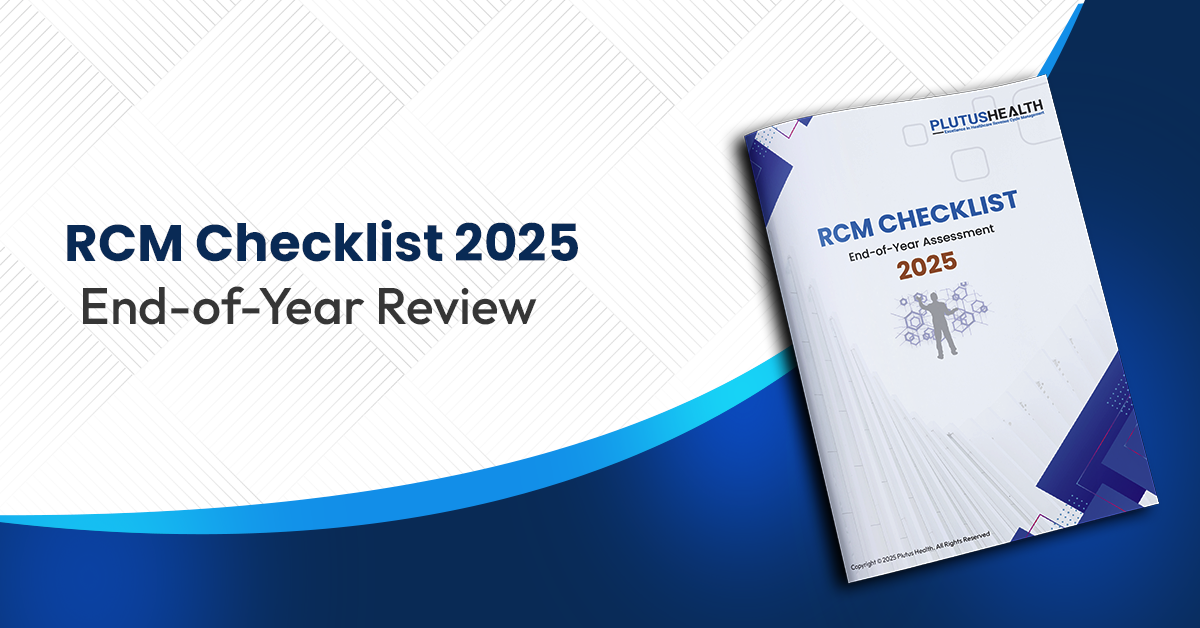5 Tips For Increasing ASC Revenue In 2023
Increasing revenue is crucial for medical practices to stay relevant and adequately funded. Updated technology has given ASCs the ability to perform more invasive surgeries. As a result, experts forecast growth in the ASC market for the foreseeable future.
The Center for Medicare and Medicaid Services (CMS) has recently committed to updating its ASC payment system. These updates are favorable to long-term income. However, ASCs must understand where to devote time and resources to capitalize on these changes.
Here are the top five tips for increasing ASC revenue in 2023.
Reduce Claim Denials and Defaults
Denial reduction is a timeless method of increasing revenue. Doing so requires strict adherence to standards. Make a habit of asking your patients about their benefits, making sure they are eligible, and performing prior authorizations before scheduling them for surgery.
Many patients don't know if their health plans are still active. If a patient's doctor was given prior authorization, ensure that the doctor is in-network and credentialed. If the procedure is going to be out-of-network, make sure you have a clear understanding of what the insurance will pay and the patient's responsibility.
When a patient gets the procedure performed and leaves your office, the chances of that patient paying a bill drop 40 percent. When researching benefits and eligibility, ask patients what their deductibles are. For those who have an overdue balance, ensure that they pay part of that balance before scheduling their next appointment.
Add More Complex Operations
Outpatient-surgery centers now perform procedures that hospitals once monopolized. Better technology and safety guidelines mean even mid-size ASCs can execute complex operations. However, many ASCs still perform limited surgeries and fail to use profitable alternatives.
Thanks to a 2017 ruling, ASCs can now receive Medicare coverage for more invasive cardiology, nephrology, and vascular cases. Experts suggest increasing high-acuity procedure volume will nearly double a mid-sized ASC's income. For example, an ASC could add a total joint program that boosts the center's monthly patients by 10 percent. In such a case, the practice would see a significant increase in income.
Before adding a new operation, ASCs must consult their state laws. Some states, such as Pennsylvania, require written notice months before adding a new procedure. Other states restrict procedure types that are common elsewhere.
Adopt Modern Medical Technology
Find a billing software that works well with your clearinghouse. Thankfully, many systems have free trial periods where you can test their suitability. Once you've settled on an appropriate system, ensure that the software is compatible with your most popular insurance agencies.
If you make it easy for your patients to pay for services, they'll be less likely to default. Financial technology (fintech) helps reduce the strain of bill paying. It lays out the reason for a charge and gives the payer an accessible way to pay. Depending on the system, fintech offers flexible payment plans. Adopt this technology to boost your patients' payment rates.
Plan for Hospital Transfers
Many hospital patients are shifting from in-patient care to out-patient care. As a result, ASCs are receiving more traffic than ever before. However, practices must avoid a few common pitfalls when reaching this new consumer base.
Patients who once had quality insurance coverage may not have any under your system. Make sure to carefully review each patient's history and medical plan before committing to treatment. Also, adopt electronic health records to link with local hospitals. This setup will make transferring patient documentation easier.
Use Specific Health Care Codes
Specificity in coding is crucial. Use ICD-10 and CPT codes to understand essential details. Failing to learn the difference between items can lead to a loss in funds. For example, using general terms for drugs instead of a specific analgesic may cost your practice. In the same vein, pay close attention to any code modifiers. Agencies like Medicare will deny claims that contain minor modifier inaccuracies.
Many ASCs consistently lose money through billing and coding mistakes. If your staff has this problem, hiring a professional billing service may be time. Plutus Health streamlines your practice's billing and coding to get the most out of each transaction. Our team of experts speeds up the reimbursement process while reducing denials.
Key Takeaways
1. Reduce the number of claim denials through strict adherence to standards.
2. Bring in more complex procedures to boost potential revenue flow.
3. Adopt medical technology to streamline processes.
4. Review hospital transfers' records and eligibility.
5. Be specific with medical codes and modifiers.
Liked the blog? Share it
FAQs


ABA providers are grappling with high staff turnover (up to 65%), rising burnout, administrative overload, and stagnant reimbursement rates. These challenges directly impact care continuity, clinical outcomes, and operational performance.


Operational inefficiency costs ABA teams up to 10 hours per staff member per week, contributing to burnout, denied claims, and longer accounts receivable (A/R) cycles. These inefficiencies ultimately result in reduced revenue and patient dissatisfaction.


Burnout leads to costly turnover, lower client retention, and decreased productivity. Recruiting and replacing a BCBA or RBT can cost up to $5,000 per hire, plus months of lost revenue and disruption to morale.


High-performing ABA organizations invest in clear career pathways for BCBAs and RBTs, align compensation with market benchmarks, and foster peer-led mentorship, flexible schedules, and wellness programs.


Automation tools like Plutus Health's Zeus streamline eligibility verification, denial management, and billing, reducing manual workloads by 5–10 hours weekly per clinician and improving clean claim rates by 95%.


Outsourcing revenue cycle management can improve collections, reduce denials by up to 30%, and free clinicians from billing-related admin tasks, resulting in better client care and financial outcomes.


One $200 million ABA network partnered with Plutus Health to automate eligibility and accounts receivable (A/R) processes. The result: $2M reduction in legacy A/R and a 97% Net Collection Rate.


By improving operational efficiency, investing in technology, and ensuring workforce stability, ABA leaders can align outcomes with reimbursement. Plutus Health supports this transition with scalable RCM and automation strategies.
FAQs


ABA therapy billing is the process of submitting claims to insurance or Medicaid for Applied Behavior Analysis services provided to individuals with autism or developmental disorders. It includes using correct CPT codes, proper documentation, and adherence to payer-specific policies.


Common CPT codes for ABA therapy in 2025 include:
- 97151 – Assessment and treatment planning
- 97153 – Direct therapy with the patient
- 97155 – Supervision and modification of behavior plan
- 97156 – Family adaptive training
- Always check with payers for any annual changes.


To bill Medicaid for ABA services, providers must ensure credentialing is complete, services are pre-authorized, and claims use the correct codes and modifiers. Medicaid requirements vary by state, so always follow state-specific billing rules.


Common ABA billing mistakes include:
- Incorrect or missing CPT codesplan
- Lack of documentation or treatment
- Uncredentialed providers rendering services
- Submitting duplicate or late claims


Without proper credentialing, providers can’t get reimbursed. Insurance and Medicaid require that BCBAs, RBTs, and organizations are credentialed and contracted. Delays in credentialing often cause revenue losses and claim rejections.
FAQs


CMS proposes a 2.4% increase in Medicare ASC payment rates, contingent on meeting ASCQR quality reporting requirements. Plutus Health helps ASCs meet these compliance benchmarks by integrating quality reporting data into RCM workflows, ensuring eligibility for full payment updates.


The ASC Covered Procedures List will expand by 547 procedures, including cardiology, spine, and vascular surgeries. Plutus Health supports expansion into new service lines by customizing RCM processes for high-acuity procedures, minimizing claim denials during the transition.


Site-neutrality narrows the payment gap with hospital outpatient departments, enhancing ASCs' cost-efficiency appeal. Plutus Health helps leverage this advantage in payer negotiations by providing performance dashboards and cost-justification analytics to secure stronger reimbursement terms.


Complex procedures increase denial risk and slow cash flow. Plutus Health's automation-first RCM model delivers 95%+ clean claim rates, reduces A/R days, and safeguards margins, even as your case mix becomes more complex.
FAQs


A hybrid RCM model combines in-house tasks like scheduling, intake, and patient communication with outsourced billing support for claims, denials, and A/R follow-up. Plutus Health enables this model with automation and expert teams.


Frequent CPT code updates, variable session lengths, high no-show rates, and sensitivity around patient collections make behavioral health billing uniquely challenging. Hybrid RCM helps strike a balance between compliance and patient care.


Tasks requiring patient interaction—like intake, eligibility checks, copay collection, and documentation—are best kept in-house, while backend processes can be outsourced.


Outsourcing denial management, claims scrubbing, and payment posting improves clean claim rates, reduces A/R days, and scales capacity without adding staff.


Plutus Health delivers 97%+ clean claim rates, AI-powered denial prediction, and 48-hour claim turnaround. Our hybrid RCM solutions provide behavioral health CFOs with visibility and control, while enhancing financial performance.
FAQs


Payment complexity, high out-of-pocket costs, increasing denials, and value-based care requirements are pushing providers toward more transparent, tech-supported payment systems.


Patients now act like consumers. They expect clear cost estimates, simple bills, digital payment options, and flexible financing.


AI, automation, and digital tools streamline estimates, reduce denials, support payment plans, and allow faster collections through mobile and online payments.


Complex billing questions, insurance confusion, and financial stress require a compassionate approach. Advocates guide patients and protect trust in clinical care.


Plutus Health supports providers with AI-driven denial prevention, predictive analytics, digital payment tools, patient financing, and a seamless platform, such as AnodynePay.















































